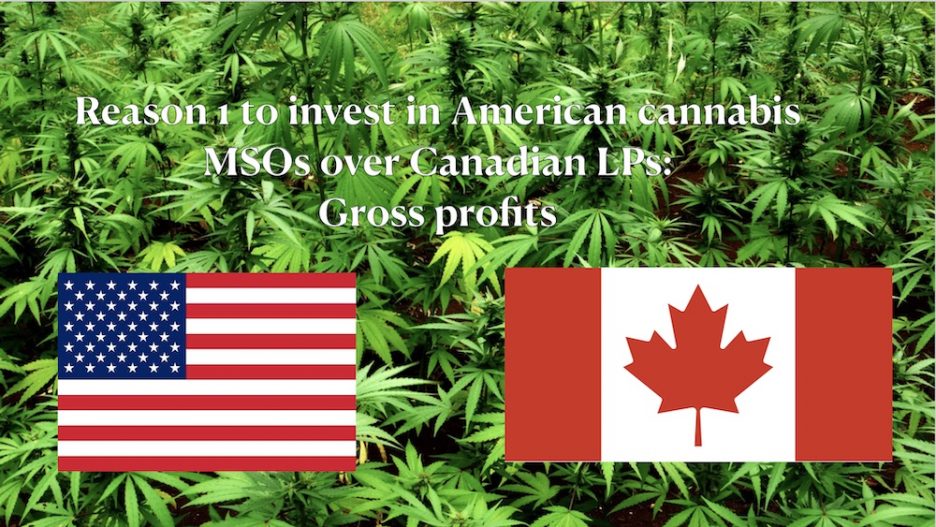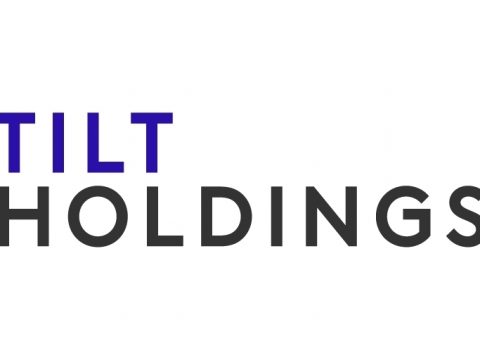This article is the first in a 10 part series on why you should invest in American Multi-State Operators (MSOs) instead of Canadian Licensed Producers (LPs).
You should be investing in American MSOs and trading Canadian LPs, not vice versa. Trading LPs is fine, but they are not long-term “buy and forget” investments like MSO. 2021 will be the year MSOs separate themselves from LPs, and a few years from now you’ll be grateful you took my advice.
Talk to any Canadian cannabis LP investor and they’ll tell you how amazing their stock results are lately. The keyword being lately. Yes, Tilray (Ticker: TLRY) was up 74% last week and up 138% year-to-date, but what is conveniently left out of the Tilray pumping conversation is that Tilray was at $148 on October 7, 2018. If you invested in Tilray in 2018 or 2019 you are likely down significantly today.
Today, Aurora Cannabis (Ticker: ACB) is at $12 but was at $127 just over 2 years ago – still down over 90%. If you’ve been trading Aurora or Tilray with any kind of skill you likely made money, but if you’ve been investing in them you’re likely depressed, even with the most recent gains. Fewer companies have destroyed more cannabis stockholder equity than these two and the main reason I’m writing this series. Let’s begin.
Positive Gross Margins Vs. Negative Gross Margins
In the first three quarters of 2020, Aurora Cannabis lost $3.5 billion. How do you lose so much money? It starts at the top of the income state with negative gross profits. Here’s a look at Aurora’s most recent financial statement on Yahoo Finance:
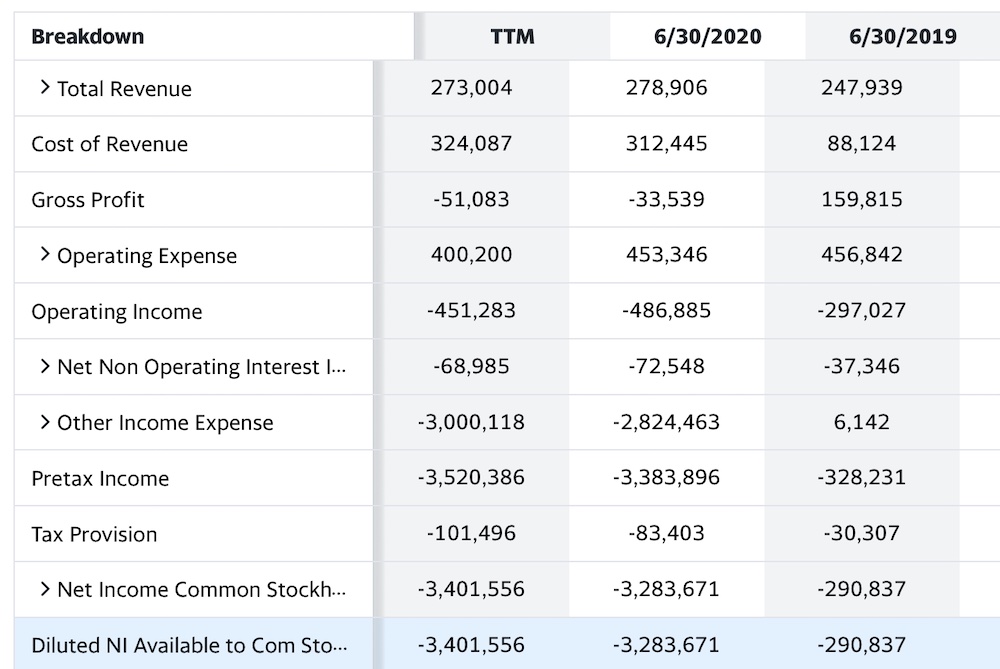
What should jump out at you right away is that Aurora’s cost of revenue is higher than their revenue – meaning it cost Aurora $324 million just to sell $273 million of cannabis giving them a negative gross profit. This is before their operating expenses of $400 million trailing twelve months (TTM) bringing their operating income to -$451 million.
Tilray is in the same boat:
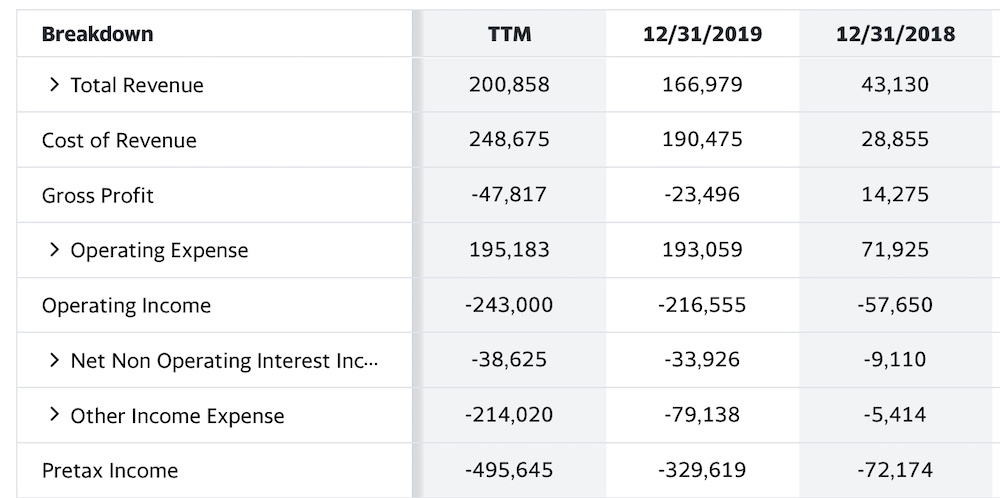
Now let’s look at American MSOS like Trulieve and CuraLeaf. Trulieve has the best gross profit margin of any cannabis company I have researched. In fact, I haven’t seen a better gross profit margin in any industry:
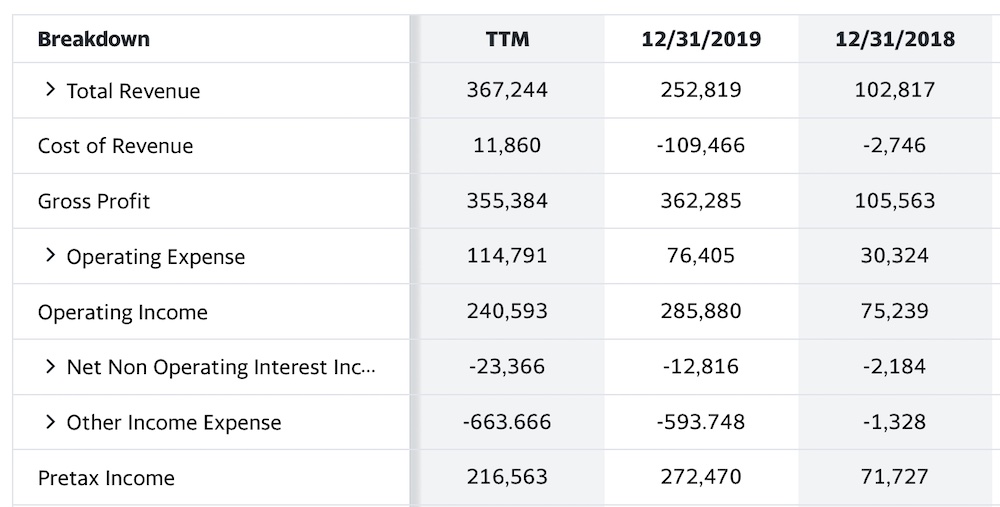
Curleaf has excellent gross profits as well and is typical of all the MSO’s:
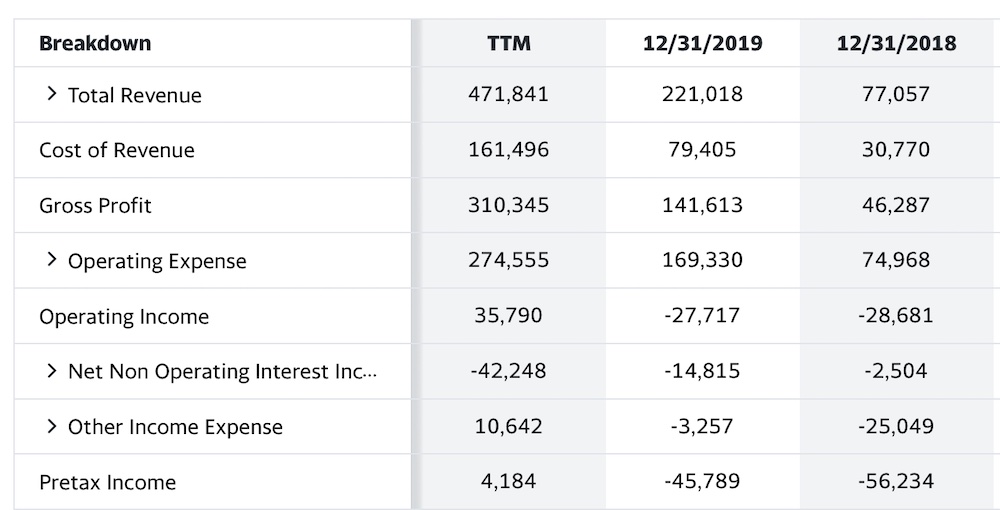
Aphria – the one gross profit bright spot in Canadian Cannabis
Aphria is one of the few Canadian LPs with a positive gross profit margin and why I was surprised by their announced merger with Tilray (the main reason Tilray’s shares have boomed.) Even Canopy Growth has a negative gross profit margin and Village Farms is barely positive. If you must invest in Canadian LPs, Village Farms seems to be heading in the right direction and with Aphria’s recent merger announcement with Tilray, I’d be cautious with investing your money in the company.
Companies like Tilray and Aurora generate cash flow by selling shares of the company, not by selling cannabis and it all starts with negative gross profits. There is no excuse for Canadian LPs having terrible income statements as they’ve had several advantages in a growth industry. Cannabis has been federally legal in Canada since October of 2018 and it’s still federally illegal in America, so Canadian companies have had a significant advantage being listed on American stock exchanges and getting favorable access to banking capital. Poor leadership and management of capital is the only conclusion I can draw from these disastrous results. Are these companies turning around? Maybe, but I refuse to reward bad leadership and behavior. Not all cannabis companies are equal, so why put your money is companies with terrible track records with negative gross margins and burning cash when there are so many with industry leading gross profits and generating cash flow?
Reason 2 to invest in American cannabis MSOs over Canadian LPs: U.S. Moats.
